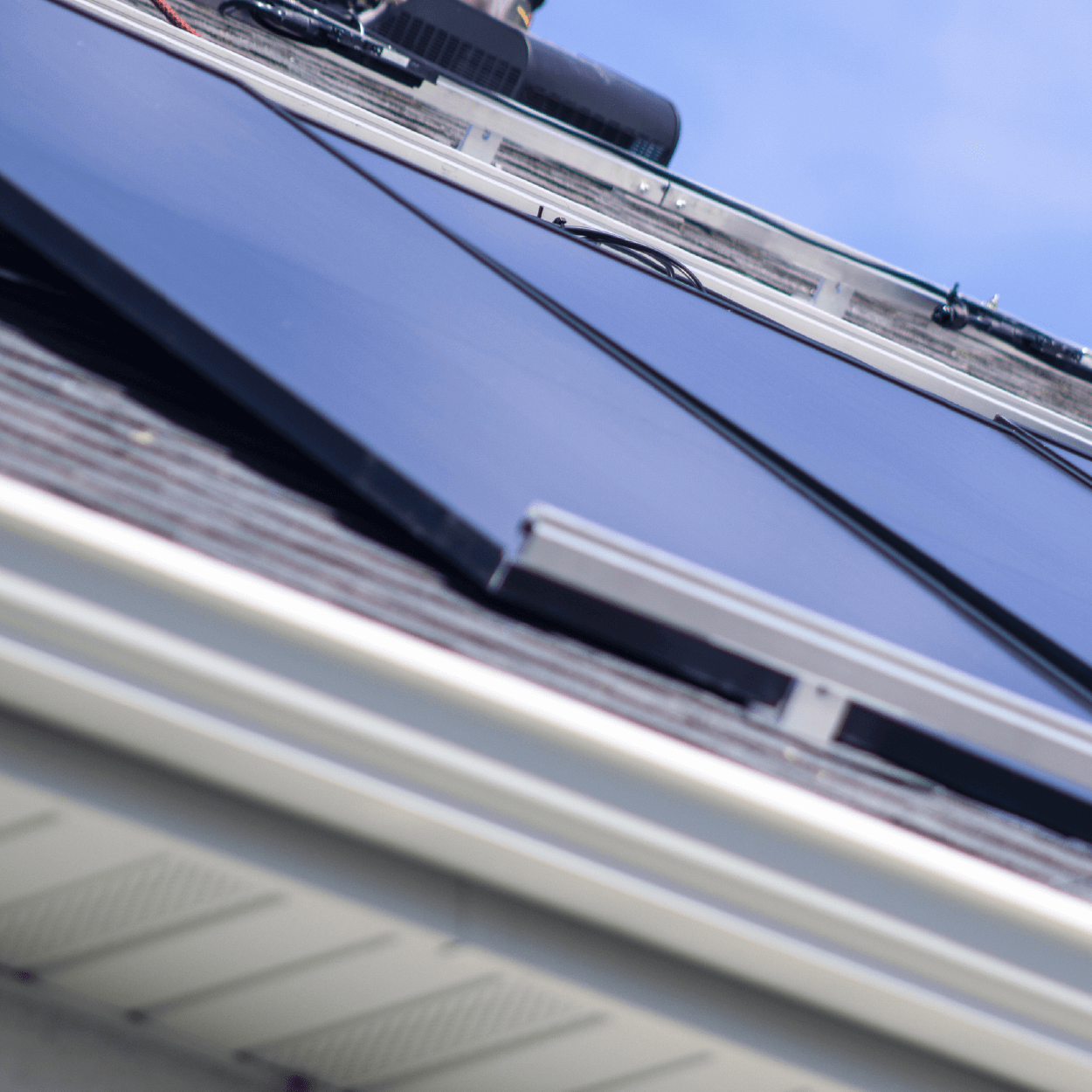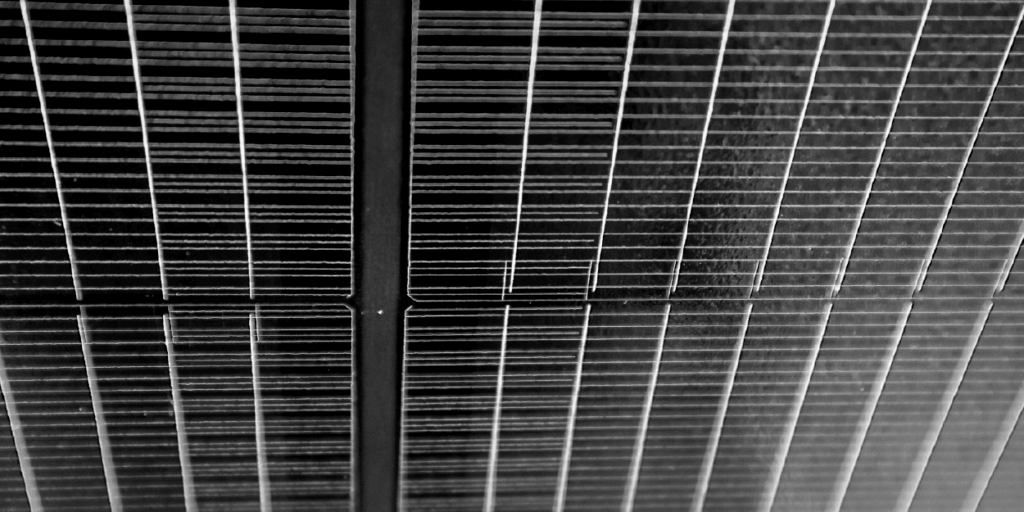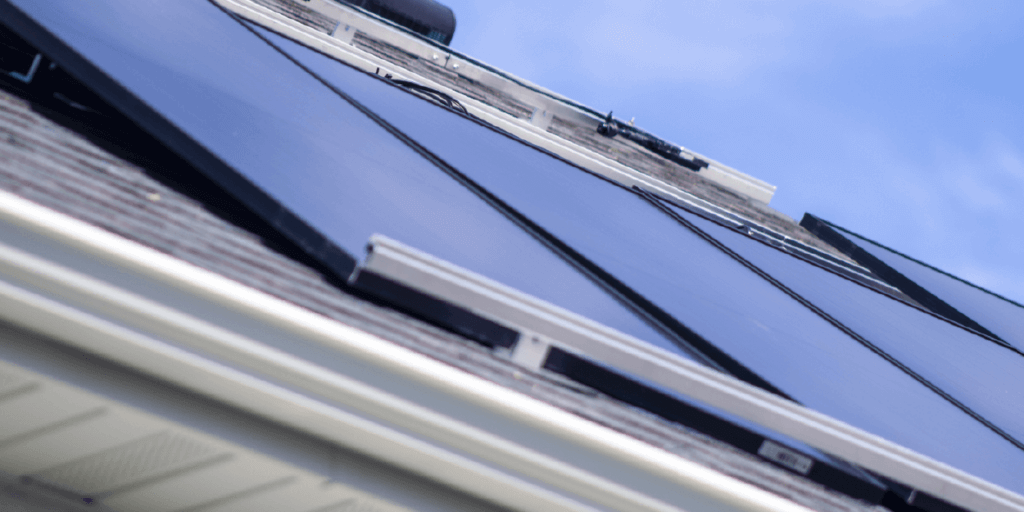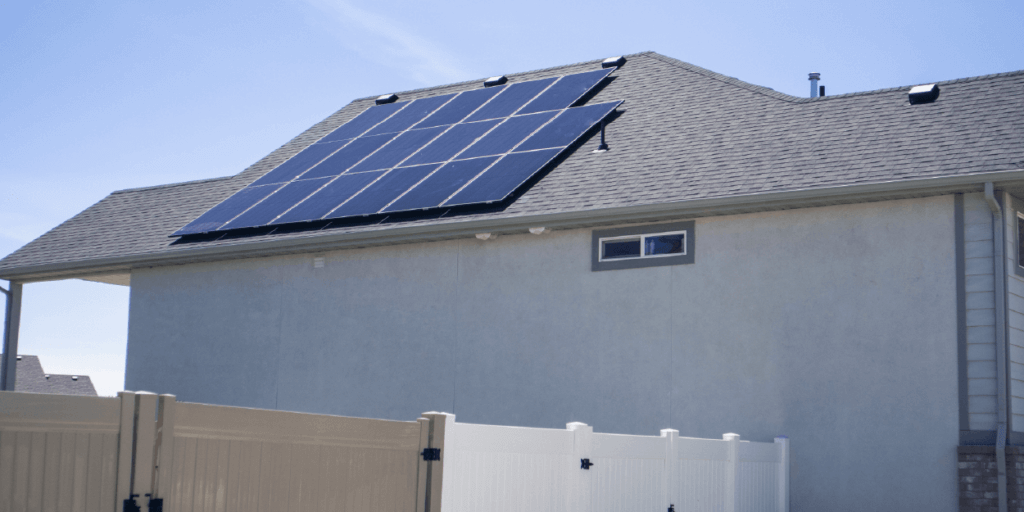
The quest for 100% efficient solar cells has intrigued researchers and homeowners alike. While advancements have improved efficiency rates in solar cells, reaching the theoretical maximum is challenging. Due to the limitations within semiconductor technology and boundaries like the Shockley-Queisser Limit, producing a 100% efficient solar cell is unlikely. Here, we explore solar efficiency and its impact, as well as how innovative materials and technological breakthroughs allow solar to be a reliable power source for your home.

Why Can’t Solar Cells Be 100% Efficient?
The main reason solar cells’ efficiency rates have not reached 100% is because semiconductors can only absorb a certain range of photons emitted by the sun at any given time. This means any photons outside of this range will not be absorbed by the solar cells and will be wasted, as heat.
A concept called the Shockley-Queisser Limit states it would also be theoretically impossible for maximum solar efficiency to exceed 33.7 percent, given the current problems impeding solar efficiency today. With limits established, solar cell efficiency increases minuscule amounts each year. If 100% efficient solar panels ever exist, it’ll take many years and technological advances to achieve.
What is Solar Efficiency?
Solar efficiency refers to the percentage of sunlight hitting the surface of a solar cell or photovoltaic solar panel which is converted into usable electricity. While the solar efficiency of each solar panel is static once it is manufactured, a rooftop can become more efficient by increasing the number of panels installed to maximize converted solar energy.
A Brief History of Solar Cell Efficiency
The first solar panels date back to 1883, but the technology of modern-day monocrystalline panels is relatively new. One of the first silicon solar cells created in the 1970’s was six percent effective. Since then, solar energy efficiency has increased drastically.
Solar power has become a promising source of renewable energy as governments, scientists, and researchers have all invested in solar research and development to continue making this renewable resource more affordable for homeowners and businesses.
Congress passed the “Solar Energy Research, Development and Demonstration Act of 1974”, which directed agencies like NASA to improve solar technologies. The Solar Energy Research Institute was also created, with the goal of facilitating the industrial usage of solar power.

Should We Aim for Higher Solar Cell Efficiency?
Higher solar cell efficiency rates would generate more electricity within the same surface area, which maximizes the amount of power while using minimal roof space. Higher-efficiency solar cells is the best-case scenario.
Considering the first solar cell started at less than ten percent, the solar industry has improved technology a lot in the last 50 years; efficiency rates today range between 19-22 percent, depending on the brand of solar panel, size of panel, and materials used (such as monocrystalline silicon). Efficiency levels can also increase to a limited extent due to a process called recombination, which opposes energy generation. 100% solar cell efficiency is not possible with the natural existence of recombination. Peak efficiency would benefit all solar adopters, but what is the feasibility of achieving this?
Five Key Factors Affecting Solar Panel Efficiency
There are several factors to consider when evaluating the efficiency rate of solar cells and the type of solar panels available for rooftop installation. Some include:
1. Lab Testing = Perfect Conditions
When an efficiency rate is given for a specific grade solar panel, the number is from lab testing, emulating nearly perfect conditions. However, these conditions are not always feasible or possible outside of the lab. Solar panels go through rigorous Standard Test Conditions. This lab-testing of solar cells provides optimal testing conditions, such as sunlight exposure and prime wavelength exposure, and the efficiency rate reflects these predetermined conditions. What fails to be incorporated or considered is the environmental factors not controlled outside of a laboratory. These include, but are not limited to roof angles, shade, and weather patterns.
2. Temperature
Most homeowners believe solar panels perform best in hot temperatures. However, they tend to produce electricity more efficiently when exposed to cooler temperatures because the electrons are at rest. When electrons are activated by sunlight, more energy is created because there is a greater difference in voltage. According to the Standard Test Conditions, the peak optimal temperature is 25 degrees Celsius, or 77 degrees Fahrenheit. Blue Raven Solar provides installation services in many states and cities which frequently experience this temperature range including Idaho, South Carolina, and Washington.
3. Solar Panel Degradation
One of the biggest concerns for homeowners who want to go solar is the degradation of their rooftop system. The older the solar panel, the less electricity they typically produce. Solar panel degradation can be sunlight or age induced, but can also be due to the overall installation, quality, maintenance, weather, and panel installation.
Solar panel degradation, however, takes a long time. Studies have shown high-quality solar panels, like the tier-1, monocrystalline ones installed with Blue Raven Solar, degrade at a rate of approximately 0.5% per year. With proper rooftop installation and simple maintenance, most solar panel systems can minimize degradation and failure. Your panels will continue to effectively generate electricity throughout their 25+ year lifetime, even with slight degradation, leading to years of savings on your utility bills!
4. Angle and Orientation
The orientation of your solar panels primarily consists of what direction your home and roof faces.
For homeowners who live in the northern hemisphere, the best direction for solar panels to face is south, as the sun’s path is in the southern sky.
Ideally, your panels should be positioned based on true south and its azimuth angle. True south refers to the point of which Earth rotates around and can be found using a compass, shadow, or the North Star. The azimuth angle is the angle between the projection of the sun’s rays and a line due north or south. A line that is true south leads to an azimuth angle of 180 degrees. By conducting these few measurements, your solar system can be installed effectively to capture when sunlight is perpendicular to the panels.
5. Inverter Efficiency
Your solar inverter is what converts the current of energy being produced by your solar panel system into AC current used to power household appliances, the same as what is supplied by the utility grid. Most inverters also measure energy production and other data directly from your solar system. There are a few different types of inverters: string inverters, microinverters, and hybrid inverters. No matter what solar inverter you have installed, the efficiency of your system will be lower if your inverter is damaged or slow to respond.

Does Efficiency Impact My Solar System’s Performance?
The more efficient your rooftop solar panels are, the more energy output they create. Solar cells with higher efficiency rates (20%+) are likely to produce more energy – resulting in a smaller number of panels needed in your system size. While higher efficiency panels are often more expensive per panel, it is typically mitigated by requiring a smaller system size. Our solar experts will guide you to the best solar options for your home by considering your energy needs, goals, and offset, and determining the appropriate system size and output.
At Blue Raven Solar, we offer our customers the highest quality equipment including solar panels, microinverters, and racking. Our premium microinverters, from Enphase, allow you to access an app allowing you to track solar production at a panel-by-panel level. Other brands of inverters have similar applications, so learn how you can best track your panel system production and energy consumption.
Will Emerging, New Technologies Improve Solar Panel Efficiency?
Recently, many technological advancements have led to improved solar cell efficiency. Solar cells are usually made of silicon. Unlike traditional silicon cells, new materials like cadmium telluride and perovskite are being tested as possible solar cell materials. Both options, if successful, could be cheaper for homeowners and increase overall solar cell efficiency.
Solar technology outside of the cellular level is advancing, too. Solar batteries are responding to the wants and needs of homeowners and have advanced including storage size, accessibility, and integration with existing solar panel systems. Solar batteries are beneficial and improve overall efficiency because they allow for more efficient solutions; instead of remnant power being sent back to the utility grid. Homeowners can become energy-independent by relying on their solar panel system and battery or other home storage solutions.
Can I Improve My Solar System Efficiency?
Yes, as a homeowner, you can improve your solar system efficiency. For maximum efficiency, monitor your solar panel system for accurate performance. If something looks unusual, notify your solar panel installer regarding the problem or issue.
Ultimately, you can make home improvements, clean your solar panels, and discover other tips to improve your rooftop system by visiting our blog.
Go Solar with Blue Raven Solar and Achieve Energy Independence
Through technological developments, solar cell efficiency can move past the current challenges of stability, reliability, and availability. At Blue Raven solar, we aim to provide all homeowners with top-quality solar installations. Increased efficiency means more power generated, saving you money and enabling energy independence.
The future is leaning on sustainable forms of energy. Allow our solar specialists to help you install an efficient, high-quality solar panel system today! If you already have a solar panel system installed, explore this resource for how to increase your systems’ efficiency.



Sorry, the comment form is closed at this time.